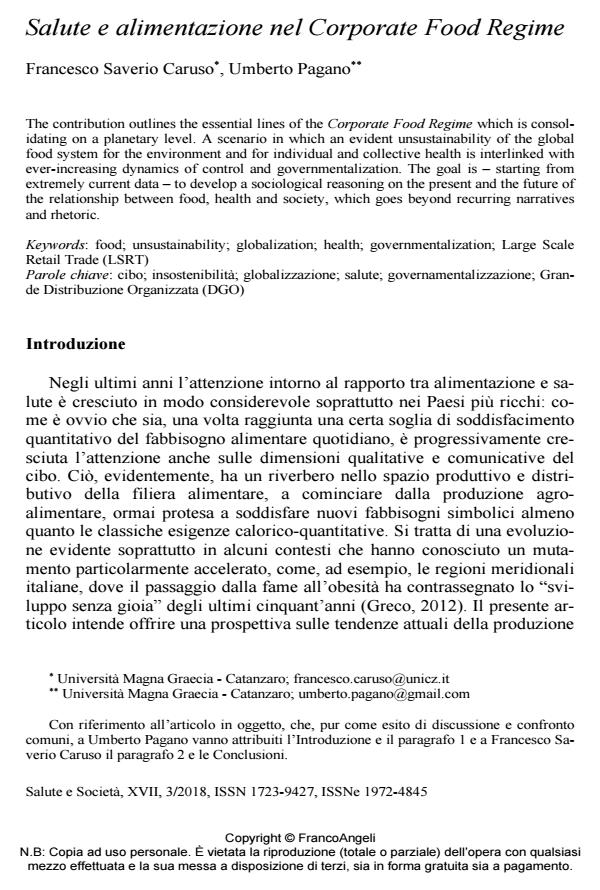Salute e alimentazione nel Corporate Food Regime
Journal title SALUTE E SOCIETÀ
Author/s Francesco Saverio Caruso, Umberto Pagano
Publishing Year 2018 Issue 2018/3
Language Italian Pages 15 P. 57-71 File size 164 KB
DOI 10.3280/SES2018-003005
DOI is like a bar code for intellectual property: to have more infomation
click here
Below, you can see the article first page
If you want to buy this article in PDF format, you can do it, following the instructions to buy download credits

FrancoAngeli is member of Publishers International Linking Association, Inc (PILA), a not-for-profit association which run the CrossRef service enabling links to and from online scholarly content.
The contribution outlines the essential lines of the Corporate Food Regime which is consolidating on a planetary level. A scenario in which an evident unsustainability of the global food system for the environment and for individual and collective health is interlinked with ever-increasing dynamics of control and governmentalization. The goal is - starting from extremely current data - to develop a sociological reasoning on the present and the future of the relationship between food, health and society, which goes beyond recurring narratives and rhetoric.
Keywords: Food; unsustainability; globalization; health; governmentalization; Large Scale Retail Trade (LSRT)
- Bordering the surplus population across the Mediterranean: Imperialism and unfree labour in Libya and the Italian countryside Lucia Pradella, Rossana Cillo, in Geoforum /2021 pp.483
DOI: 10.1016/j.geoforum.2020.06.019
Francesco Saverio Caruso, Umberto Pagano, Salute e alimentazione nel Corporate Food Regime in "SALUTE E SOCIETÀ" 3/2018, pp 57-71, DOI: 10.3280/SES2018-003005